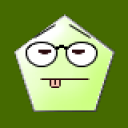3 Answers
How Airplanes Fly
Airplanes fly because they are able to generate a force called Lift which normally moves the airplane upward. Lift is generated by the forward motion of the airplane through the air. This motion is produced by the Thrust of the engine(s).
The figure below is a simple diagram of the four forces acting on an airplane – Thrust, Lift , Drag and Weight. Drag is the force produced by the resistance of the air to the forward motion of the airplane. Swish your hand rapidly side-to-side and you will feel that resistance on your hand.
Weight is the force created by the pull of gravity toward the center of the earth. You will feel the effect of this force if you jump up from the floor. Your weight will force you back down.
When the Thrust produced by the engine(s) is greater than the force of Drag, the airplane moves forward. When the forward motion is enough to produce a force of Lift that is greater than the Weight, the airplane moves upward.
While any part of the airplane can produce Lift, the most Lift comes from the wings.
Fixed and Rotary Wing Aircraft
Now you are probably thinking that helicopters do not need to move forward in order to fly, and you are right. This is because helicopters are "rotary wing aircraft," meaning that the rotor which is turned around rapidly by the engine(s) is shaped like a narrow wing and provides the Lift necessary to overcome the Weight of the aircraft. This is different than a "fixed wing" aircraft where the wings are attached to the fuselage (fixed) and the Thrust of the engine(s) moves the plane forward to generate Lift. Tilting the rotor allows the helicopter to move forward and backward or side-to-side.
How is Thrust Generated?
There are two basic types of airplanes - propeller driven planes and jet planes.
F4U Corsair Showing Propeller
Propeller Driven Planes - Propeller driven airplanes use a propeller that is turned by some type of engine. Propellers are shaped just like the wings, and also generate lift, except that the lift is forward instead of up and is called thrust. Each propeller is made up of two or more blades. The first propellers were made of wood, but now most propellers now are made of metal. The F4U Corsair is a propeller driven aircraft.
Jet Planes - Jet planes do not have propellers. Instead, they have jet engines that move the airplane forward through another physical principal discovered by Sir Isaac Newton (1642 - 1727). This is Newton's Third Law of Motion - "For every action there is an equal and opposite reaction." You can think of a jet engine as a tube in which a liquid fuel (like the fuel diesel trucks use) is burned at high pressure with air from a compressor. The resulting heat forces the gases out of the back of the tube at high speed. In accordance with Newton's Law, an equal force is applied in the forward direction, moving the engine (and the plane it is attached to) forward.
These are simple explanations, and the real systems are complicated machines that are designed by specially trained engineers.
If you would like to start learning more about flight and how Lift is generated by aircraft wings, you can download a free simulation program created by NASA that will let you explore this topic. There are two programs depending on your education level - Elementary Version and Full Version.
| 13 years ago. Rating: 0 | |

 alll
alll
 Ed1530
Ed1530
 dunc
dunc




